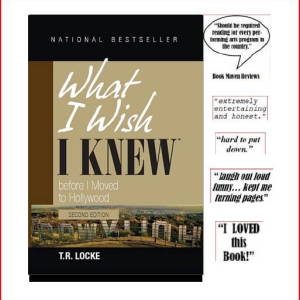How to Write a Book
People come up with great ideas for books every day. They put a lot of thought into these ideas and even develop intricate plots and storylines. Although they may jot these elements down, seldom do people actually write the book. It is not because they do not want to write the book, but because they do not know how. If this sounds familiar to you, the following few tips can help you take the next step toward making your book a reality.
The first thing to do when writing a book is to decide who your audience is. Amazingly, most would-be authors don’t realize how essential this is. It becomes obvious if you consider the difference between a book written for children and one written for adults. But even when you know you are writing for adults, it is also important to further consider which adults make up your audience: College students? Teachers? Salesmen? People who live in your district? Elderly people? Patients? African-Americans? Single women? People who read thrillers? People who read romance books?
At this point, you also want to begin researching what other books are out there competing against yours to help make sure you do not simply recreate the wheel. How do you know what is competing against you? Think about what book will be sitting on the shelf next to yours at Barnes and Noble–that is your competition. It is important that your book be something unique if you want to interest an editor, publisher or agent–not to mention if you people to buy it. What are you saying that no one else is saying?
Keeping your audience and your competition in mind, the third element to consider is the topic and genre of the book. Will your book be fiction or non-fiction? Will it be a mystery, a romance novel, a biography, or a how-to? It was at this point in the book writing process that the authors of the best-selling business book, “Who Moved My Cheese?” and the author of “The Wealthy Barber” realized that using a fictional story to communicate business ideas would be better than simply creating another how-to book. Thinking about the best genre and style to use in communicating your ideas to your audience is key to finding new, creative, and lucrative pathways for your book’s success.
After you decide on a topic and genre, you should create an outline of the book’s contents. Be as thorough as possible in your outline because it will serve as your “map” when you begin writing. If fiction, add character names and profiles to the outline. Also, consider the setting where the book will take place as well as large plot points and any ideas that MUST be included in the book. You can even write the chapter titles in the outline to help guide the narrative.
If you are writing non-fiction, consider the main points much like you would a research paper. Once you flesh out the story in an outline, you may want to craft the initial two chapters. For many non-fiction books, this is the point where the author prepares a book proposal to submit to a publisher, agent, or editor. The content of a book proposal is beyond the context of this article, but many books exist to help you write one. Of course, a professional ghostwriter can also do all of this for you.
Fiction books and self-published non-fiction books, however, require you to complete the full manuscript. After you have completed your outline, you will want to start writing a rough draft. Use your imagination “flesh out” the story according to your outline. When writing a book, you will complete several drafts, so the first one need not be perfect. What is more important is to get the story on the page quickly–over-thinking or being overly critical of your writing at this stage militates against your efforts. Keep a notebook and pen or recording device with you for when you think of great ideas to add when not working on the draft. After the first draft is complete, read it over and decide what to edit out. Take notes as you read the book to make sure you did not forget important points or to address new ideas that arise as you read over the draft. This is also the time to do your first proofreading for grammar and spelling.
Then rewrite the book.
Once you have a second draft completed, ask someone to read through the book and proofread it while you take a break from the book. You should also ask them to give you any suggestions. When you write a book, it is important to take all constructive criticism available. Writing a book is a difficult task, so having some help is important. You could even have many people read over the second draft and take all of their notes into consideration. Once they have given you their comments, you can decide if you want to make any changes. If you do want to make changes, create a third draft and go through the proofreading process again and again until you are satisfied. Once you are confident your book requires no more changes, your book is complete. Now what? Traditional publishing? Self-Publishing?
Writing a book is a very rewarding but complicated process. Many people find hiring a ghostwriter makes that process remarkably smoother. Having a professional handle this process or guide you through it can help you avoid serious mistakes and save precious time even if you are an excellent writer. Hiring a professional to help you write your book is just about as important as hiring a professional to help you build your house–just because someone explains the process, doesn’t mean you’ll be able to do it–a lot can happen along the way. When it comes to writing books, Your Ghostwriter Online has “been there and done that” and is happy to help you do it too. Contact me today to help you get going on your new book.
- AI’s Achilles Heel(s): Long-Form Sustained Thought and Truthfulness - February 17, 2023
- Don’t Believe the Hype–Why AI Can’t Write Your Novel - February 16, 2023
- Can You Make Money from Writing Your Book? - October 1, 2019
Comments are closed.













